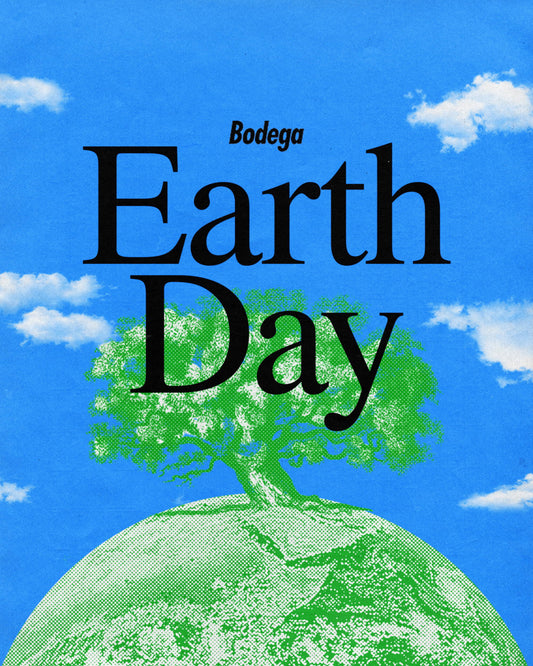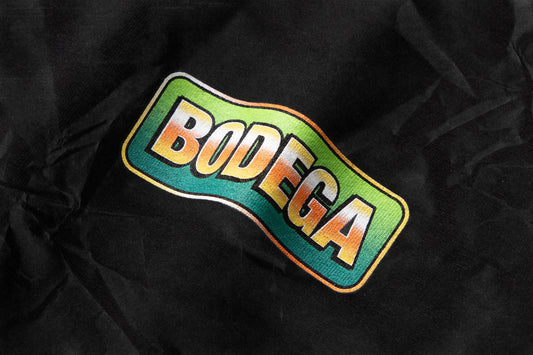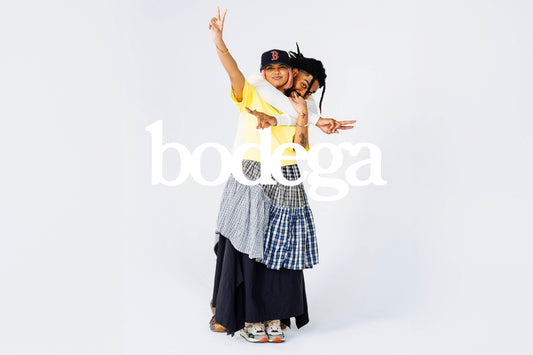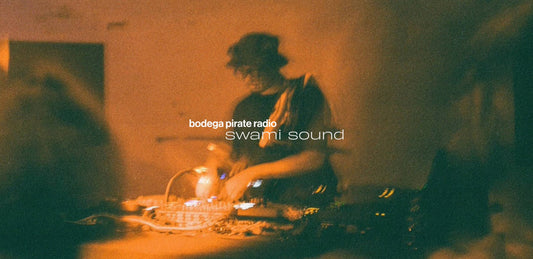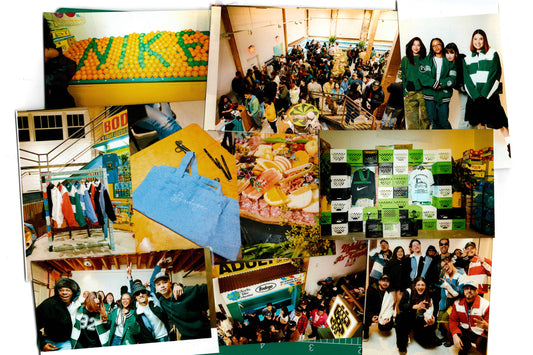A multimedia artist from Los Angeles, Matt McCormick’s work provides a social commentary on the propagation and disillusionment of the mythic American West as an idyllic land of opportunity.
From his early work as a tattoo artist to his more recent output as a painter and clothing designer, McCormick’s artwork juxtaposes archetypal iconography from the Old West with seemingly disparate elements culled from Hollywood and advertising to demonstrate the dichotomy of the conflicting visions of America’s final frontier Bodega caught up with McCormick to talk about his life in art and his clothing line, One of These Days.
Give us a timeline for your life in art. Did it start with tattooing? When did clothing enter the picture?
Instead of just the normal toys, I grew up playing with art supplies in my parent's studio as well. From different drawing materials, paints, typewriters, and other materials it was always present. Having two examples in front of me from a young age normalized perusing a creative path from the beginning. As I got older I was influenced by a lot of the graphics of punk show flyers, t-shirt graphics, album art, and tattooing. At the time these mediums seemed at least semi-obtainable, plus they spoke a language that I could easily connect to as an angst-riddled teen. A lot of the drawings and paintings I was doing around this time were centered around those themes and styles. Simultaneously I was messing around with making shirts and dreaming up my own clothing brand.
Do you still tattoo, or is that over?
I never formally said that I stopped tattooing, but it has been almost 5 years since I tattooed. It will always be something that I love, but I came to the realization that to truly take the rest of my practice where I want I needed to narrow my scope a bit.
Why the American West? What is the message and where do you fit into the Old West narrative?
It’s a genre of imagery that has always stood out to me, it constantly weaves in and out of the American narrative. I will say it's not just the obvious cowboy image for me though, it can be a simple as an old tire next to a gas station, or a hand-painted sign. America represents many different things to many different people, which creates a wide landscape to work in. I use the imagery in my work because that’s what I know, that’s what I’ve seen. At points it may push to the almost cartoonish cowboys but other times it’ll be simple throwaway objects. They all have a story to tell. The Old West narrative is relatively irrelevant in my work, I would rather reference the act of making the Hollywood depictions of that time than the actual time.
Has the idea of the mythic American West changed and how?
I would say it is ever-evolving, and as the access to information becomes greater, so does the space in which the myth inhabits.
Tell us about your workspace.
The workspace is an ever-evolving free space to try and keep pushing toward some end goal that I don’t exactly fully understand. It’s broken up into different rooms and businesses. I’ve shared my spaces with my partner with One Of These Days, Jered Vargas for about 5-6 years now, and during that time both our separate businesses and shared projects have grown significantly, so the space evolves and grows with that. There’s a gallery space, creative agency office, my painting studio, and then everything that goes into Jered’s business Triple 7 Distribution.
What motivates you?
The desire to grow and achieve as much as I can. My father told me at a young age that the son is supposed to stand on the father's shoulders. So I’m constantly trying to build on what I've seen him, my mother and other influential characters in my life do before me.
If you were using a music soundtrack to describe yourself, name 3 essential and telling tracks?
"Neil Young" - Dreamin Man
"Depeche Mode" - Black Celebration
"Bob Dylan" - Days of ’49
What are a few of your favorite things right now: Books, Film, Style, Music?
Book: American Blood - Danny Lyon
Film: Scarecrow
Music: Been exploring modern country in depth.
Tell us about One of These Days. When? Why? How many people are involved?
One of These Days came together after I moved to Los Angeles and fell into working on Fairfax. I subsequently became friends with a lot of people owning and operating clothing brands. After I had been making work more publicly for a couple of years I partnered with my good friend Jered Vargas. The idea from the beginning was to present clothing as art objects similar to a print edition. I was witness to the ways in which people would collect clothing similar to the way people collect art and other objects of design, so I wanted to find a way to be more explicit about it. The project is spearheaded by myself and Jered, but we’ve built a small team that bring a lot to the table.
How do you feel about art on clothing? How does it impact the art itself? How do you choose what goes on a shirt?
For a long time I was pretty concerned with keeping a pretty defined separation between the traditional mediums and the clothing, but as time has gone on I’ve become looser with that intention. At this point, I just look at it as another media that exists in its own space. To me it’s important for it to live on its own outside of the rest of the work.
We are carrying your upcoming Blue Moon pieces. What is the story behind those?
2021 is the 60 year anniversary of Blue Moon becoming an international Number 1 hit single. The Marcels released their classic doo-wop rendition of the standard ballad and brought the almost cartoon-like soda fountain culture of America to audiences around the world, but the song was originally released in 1934 and had already reached American acclaim in 1949 twice by Mel Torme and Billy Eckstine.
Blue Moon resonates deeply with One of These Days for its fluidity across multiple genres and generations with its uncanny ability to be recontextualized consistently by so many different artists, from Sam Cooke to Bob Dylan, the song perfectly encapsulates the timeless elements of American culture that One of These Days strives to speak to and represent within the brand's spirit and overall mission.
Tell us about some of your most recent pieces.
I recently completed my show The Sun Shines For Those Who Look Beyond The Clouds. The show consisted of 10 paintings and 1 sculptural installation. I have long been inspired by photographers from the New Topographics group and I became fascinated with the narrative of them studying and idolizing the works of the landscape photographers before them such as Ansel Adams, but when it was their turn to go out and shoot the great American landscape, the landscape was greatly altered and filled with structures, signs, and other manmade objects. You would have a beautiful scenic mountain range with a trailer park in front of it. The photos essentially documented man's answer to the original nature. Within the body of work, I chose to paint Tornados tearing through those same types of landscape essentially continuing the conversation between man and land.
What message you do want your audience to walk away with when it comes to your art?
I have no message. I just want to make sure that the viewer can engage in their own way. As long as there is some space to have a reaction or be presented with a question, I have done my job.
Photographer: Mikol Brinkman // @mikolbrinkman


